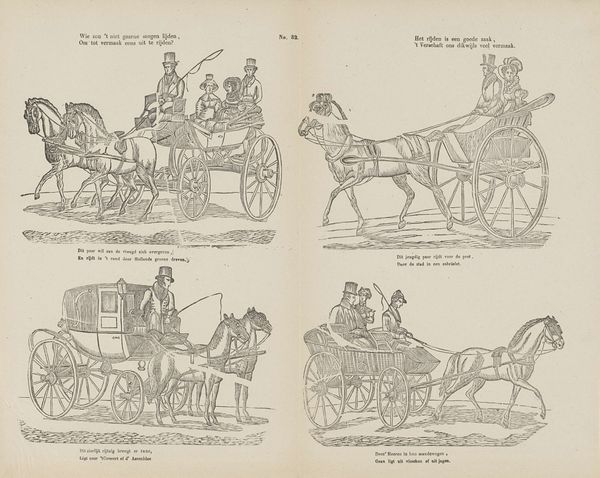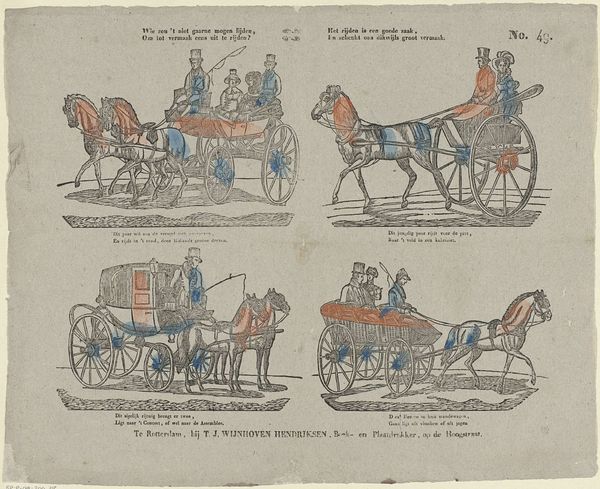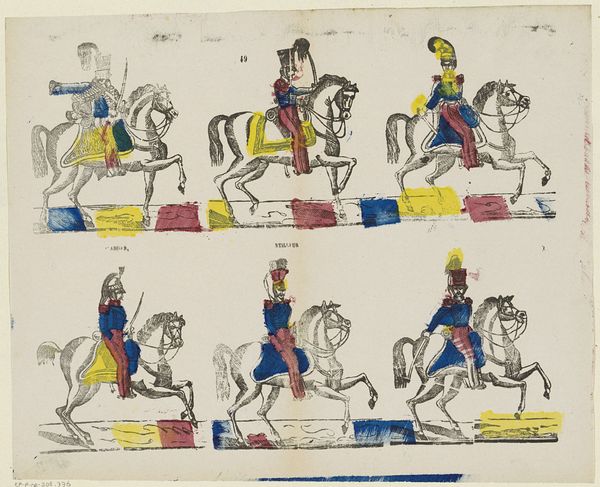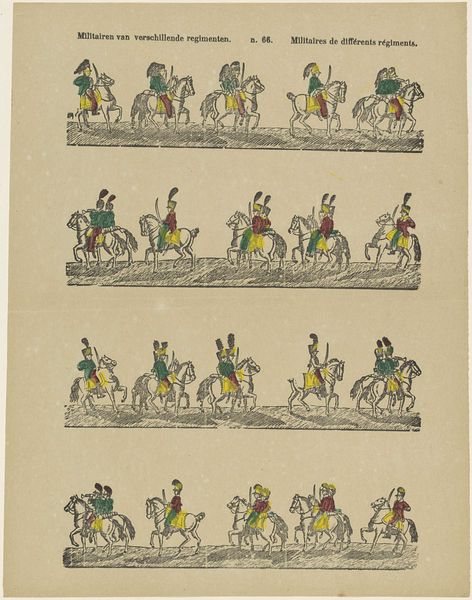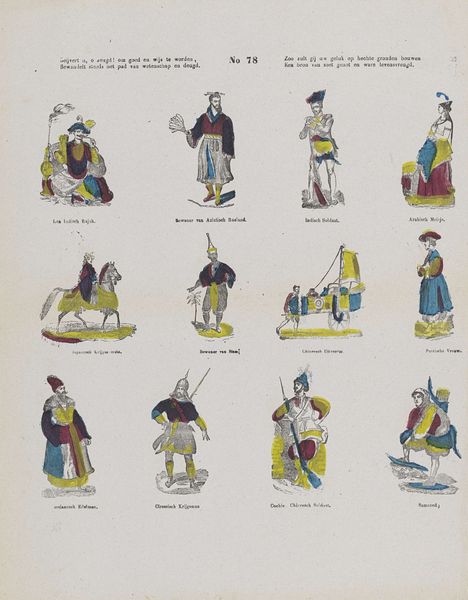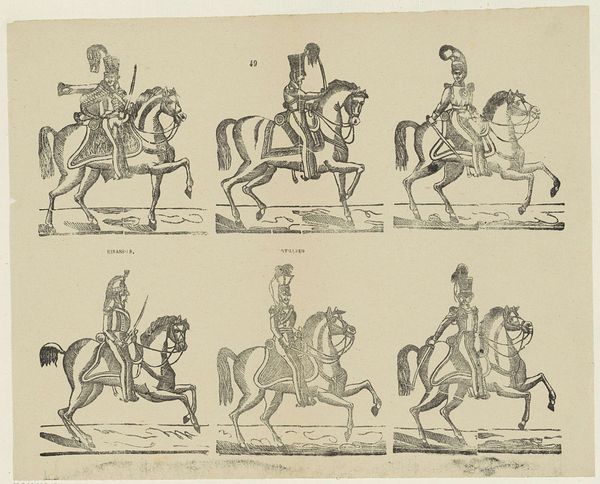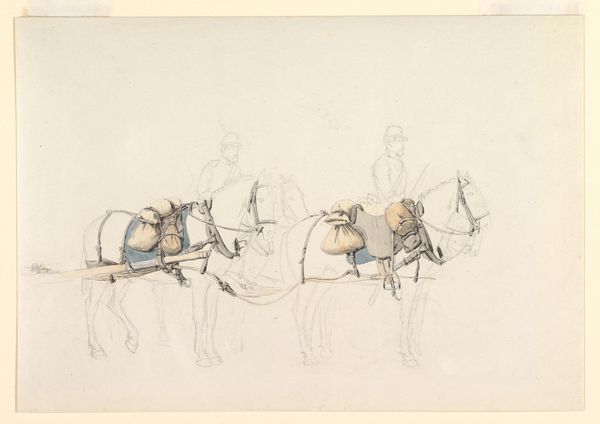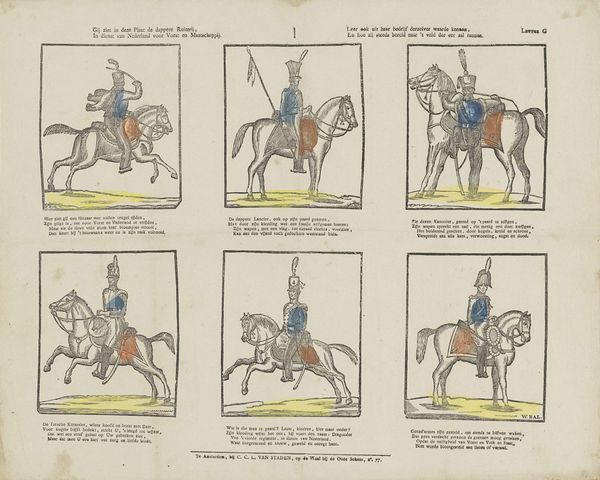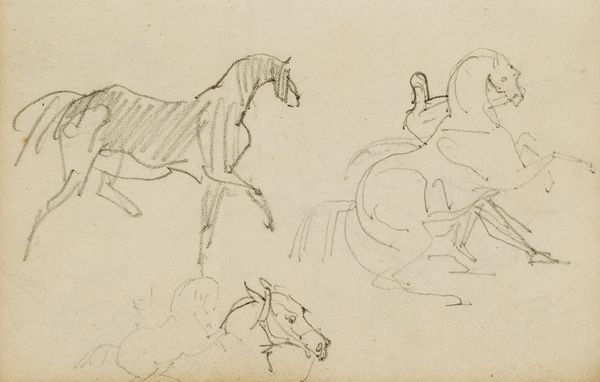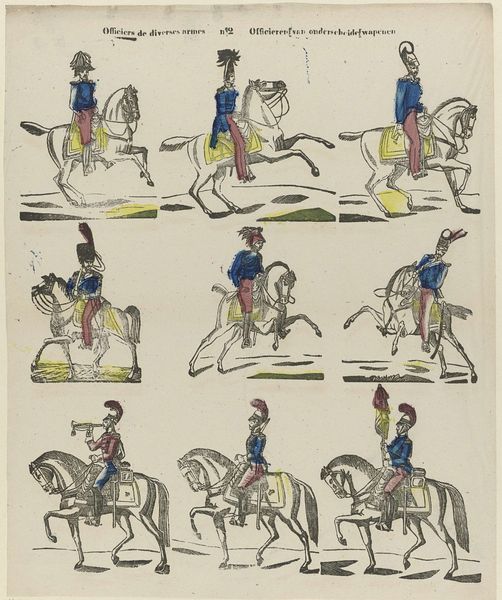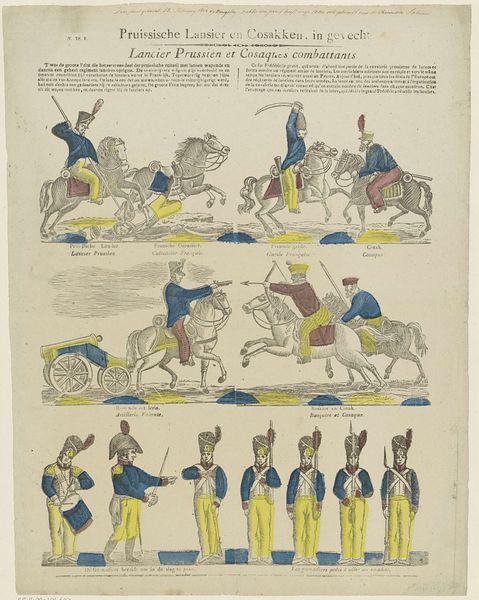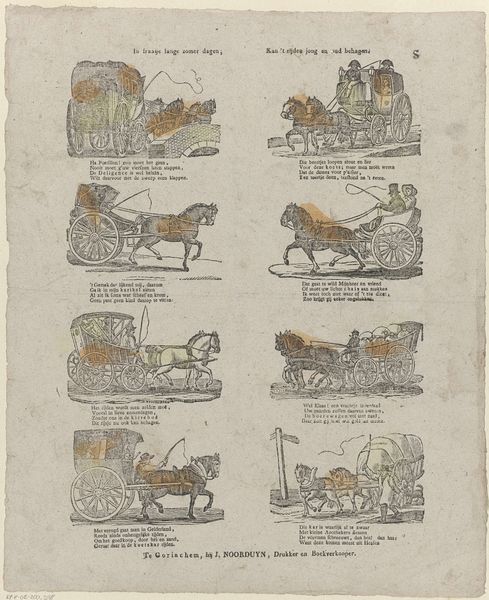
Wie zou 't niet gaarne mogen lijden, / Om tot vermaak eens uit te rijden? / Het rijden is een goede zaak, / 't verschaft ons dikwijls veel vermaak 1848 - 1881
0:00
0:00
print, etching
#
light pencil work
#
quirky sketch
# print
#
etching
#
caricature
#
sketch book
#
landscape
#
personal sketchbook
#
sketchwork
#
ink drawing experimentation
#
sketchbook drawing
#
watercolour illustration
#
genre-painting
#
storyboard and sketchbook work
#
sketchbook art
Dimensions: height 319 mm, width 394 mm
Copyright: Rijks Museum: Open Domain
Curator: This etching, titled "Wie zou 't niet gaarne mogen lijden, / Om tot vermaak eens uit te rijden? / Het rijden is een goede zaak, / 't verschaft ons dikwijls veel vermaak," by Lutkie & Cranenburg, likely created between 1848 and 1881, strikes me as surprisingly playful, almost whimsical in its presentation. Editor: Yes, the application of watercolor hints does provide a certain lightness, doesn't it? But it also directs our attention to the economic structure it depicts. The print highlights leisurely carriage rides; who owned them, who provided labor, how was this facilitated in urban environments? Curator: Well, speaking of that labor and class structure, carriages throughout art are consistently used to signal power, status, and movement. In each of the four studies in this one print, all the horses face in different directions implying dynamism while the use of color brings an almost satirical energy, mocking the pretensions of bourgeoise leisure. Editor: Indeed, these were undoubtedly commissioned products manufactured to uphold social stratification. This almost feels like it satirizes printmaking conventions too, undermining established artistic practice to convey certain values about economic practices. Curator: Interesting. To my eyes, it underscores how persistent and effective the symbolism of transport is in representing hierarchical societies, and of course, as you indicated, what that signifies about production methods within Dutch society. The way the figures are rendered feels both naive and deliberate. They recall certain broader Dutch cultural traditions. Editor: And through these scenes the imagery becomes quite powerful. Looking beyond individual wealth and materials, this is very valuable evidence about cultural habits related to social status. You have given me quite a bit to mull over. Curator: Likewise, your insights are making me appreciate this piece and its cultural nuances even more. The charm belies its depth.
Comments
No comments
Be the first to comment and join the conversation on the ultimate creative platform.
